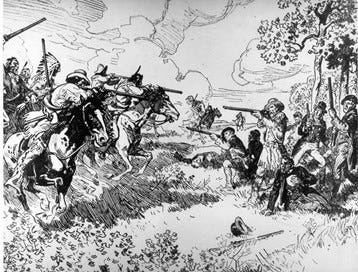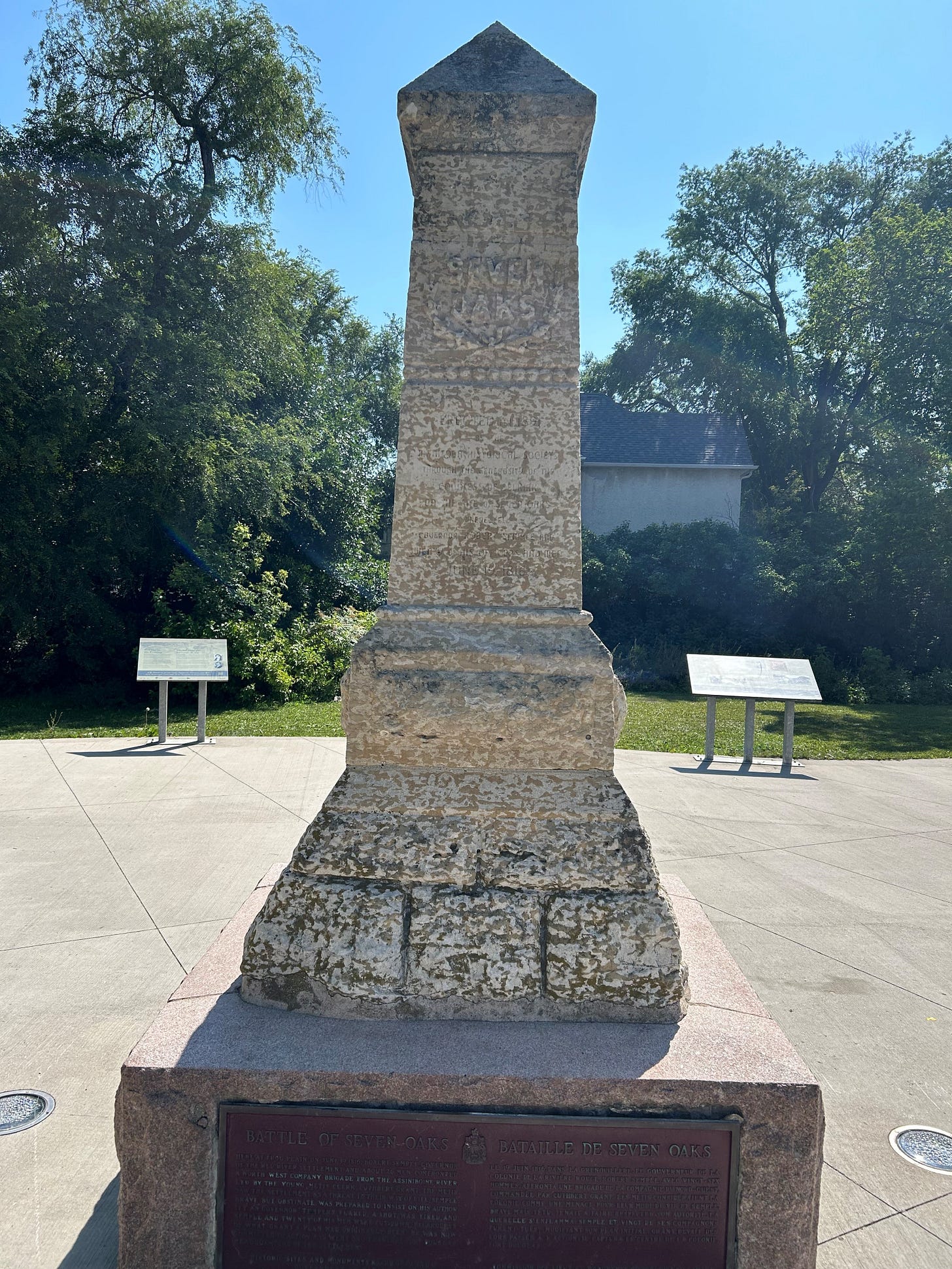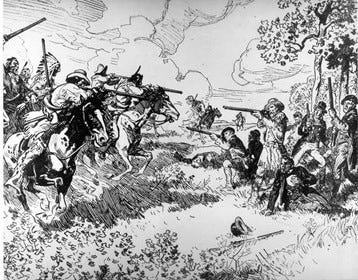The Victory at Frog Plain: A Nation Declared
Celebrating the 209th Anniversary of the Battle of Seven Oaks/la Victoire de la Grenouillère
At a quiet intersection in Winnipeg, where Main Street meets Rupertsland Boulevard, stands a monument—unassuming to the casual passerby, yet sacred to the Red River Métis. It marks the site of a clash long misrepresented in the chronicles of our country. Known to some as the Battle of Seven Oaks, and to others—more rightly—as la Victoire de la Grenouillère, it was fought on this day, June 19th, in the year 1816.
Though the skirmish itself lasted scarcely fifteen minutes, its meaning echoes through the centuries. For it was here that the Métis People, mounted and resolute, declared themselves not merely hunters, traders, or guides—but a Nation.
A Gathering Storm
The seeds of conflict had been sown years earlier. The Red and Assiniboine Rivers, ancient arteries of trade and life, had become a contested frontier between two economic empires: the Hudson’s Bay Company (HBC) and the North West Company (NWC). Their quarrel was ostensibly over pemmican—lifeblood of the fur trade—but at root, it was about power, land, and identity.
Lord Selkirk’s vision of a Scottish agricultural colony at Red River, though ambitious, was poorly executed and fundamentally at odds with the lifeways of the Métis. The settlers struggled; the Métis thrived through free trade, mobility, and kinship networks spanning thousands of kilometres. When HBC Governor Miles MacDonell issued the 1814 Pemmican Proclamation, banning the export of this essential foodstuff, the Métis saw it for what it was: a direct assault on their economy and freedom.
They refused to recognize the authority of a colony imposed upon them without consent. They resisted—not out of malice, but out of necessity.
La Nouvelle Nation Rises
Under the leadership of Cuthbert Grant, the Métis gathered at la Grenouillère—Frog Plain. There, on June 19th, 1816, they encountered Governor Robert Semple and a contingent of 26 armed settlers and HBC men.
The confrontation was brief, and bloody. When Semple attempted to seize the bridle of Métis envoy François-Firmin Boucher’s horse, tensions exploded. According to the Royal Commission led by William Bachelor Coltman, it was Semple’s men who fired the first shot.
In the aftermath, 21 of Semple’s party lay dead—including the Governor himself. The Métis lost only one: 16-year-old Joseph Letendre dit Batoche. That night, they gathered to sing La Chanson de la Grenouillère, composed by Pierre Falcon, immortalizing the event as a moment of triumph—not of massacre, but of resistance and resolve.
It was then that Cuthbert Grant is said to have raised the infinity flag—the banner of the Métis Nation—for the first time. In word and deed, the Métis declared themselves la Nouvelle Nation.
Misremembered, Then Reclaimed
For generations, colonial narratives portrayed the encounter as a “massacre,” casting the Métis as aggressors and the settlers as innocent victims. But history is not static—it is a dialogue between evidence and memory.
In 1819, Coltman’s report to the British House of Commons exonerated the Métis, affirming that they had acted in self-defence and that both parties had sought to avoid open conflict. And yet the myth persisted.
It is only recently—through the voices of Métis leaders, scholars, and knowledge keepers—that the truth has been restored to its rightful place. The Manitoba Métis Federation now honours this day not with shame, but with pride. The song of Falcon is once again sung. The flag once flown in resistance now flies in celebration.
More Than a Battle—A Testament of Nationhood
The Victory at Frog Plain was not a lone moment. It was a harbinger. It foretold the Resistance at Red River in 1869, the proclamation of the Bill of Rights, the emergence of Louis Riel, and the eventual entry of Manitoba into Confederation—not as a conquered territory, but as a negotiated province.
It reminds us that the Red River Métis are not a scattered people defined by geography alone. We are a Nation, born of the fur trade, forged in the fires of struggle, and bound together by language, law, kinship, and memory.
Why It Matters Today
In an age where history is too often reduced to slogans or sanitized into silence, we must remember what this event teaches:
That identity is not bestowed by governments; it is claimed by peoples.
That the right to self-determination is not granted by empires; it is asserted through action.
That reconciliation begins not in forgetting, but in the honest telling of our shared past.
As we mark the 209th anniversary of la Victoire de la Grenouillère, let us reflect not merely on a confrontation, but on a declaration: Nous sommes une nation. We are a Nation. We were then. We are now.
To the leaders of the present, to the youth of the future, and to the ancestors whose courage paved our path—may we never forget.






